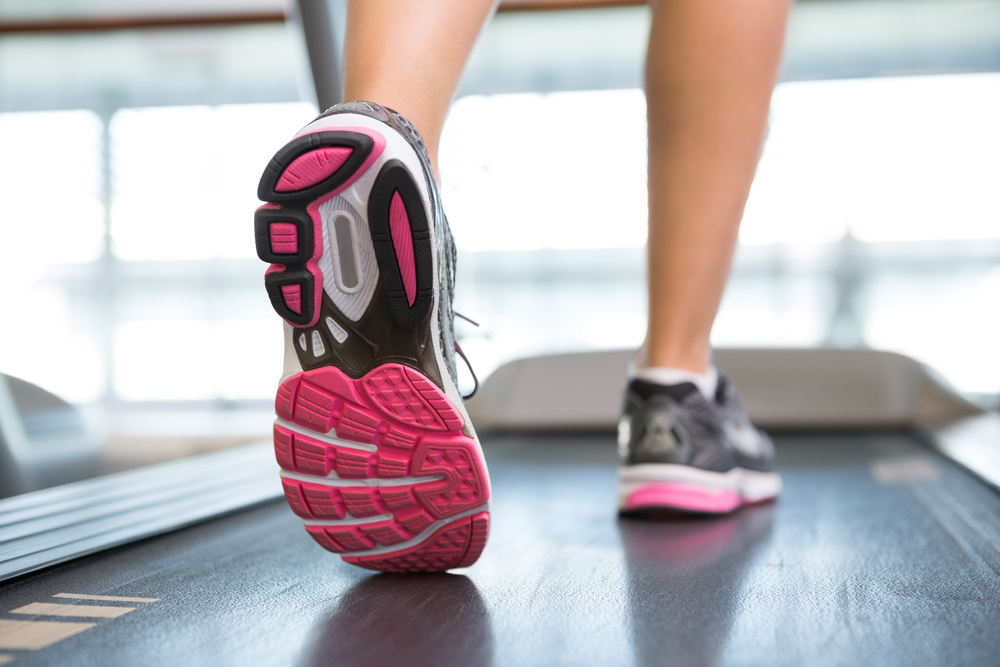
The sport of running sometimes requires more detail be paid to the way to feet move while on the ground. Running style and foot type are major factors to consider when selecting running shoes and it is always best to learn how a shoe’s materials are adapted to fit both.
Determine Your Running Type
The type of runner that you are can determine if you are in need of shoes designed to provide a certain fit or cushion based on how your feet hit the ground. Runners may exhibit neutral pronation, over-pronation or supination, otherwise known as under-pronation. Pronation type is determined by how the shoe wears between the ball of the foot and the heel. This can be observed by looking at the bottom of an old pair of worn running shoes. A neutral pronation pattern exhibits a normal wear from the foot rolling inward after the heel strikes the ground. Runners with this type of pronation are considered mechanically efficient and do not need shoes designed to correct their pronation or provide addition support or cushion. Those with overpronation show more wear along the inside edges of the shoe and may need to choose running shoes that reduce motion and provide more stability to reduce the risk of knee pain and injury. Runners with supination have feet that roll outward when they hit the ground. Their shoes will exhibit more wear and tear around the outer edges. They are in need of shoes that are more flexible and provide more cushion to help reduce impact when the feet hit the ground.
Determine Your Foot Type
When discussing foot type and running, three main types exist. They refer to the arch and the flexibility that comes with each type of arch. Feet may exhibit high, moderate or low arch. The lower the arch, the greater the flexibility and the more support is needed. The majority of the population possesses a moderate arch and should opt for shoes with medium levels of support when choosing a running shoe. If you fall in either of the other two categories, select your support level accordingly.
Learn the Anatomy of a Shoe
Marketing experts spend a lot of time finding ways to emphasize parts of a shoe and how it helps runners. However, if you are not familiar with what the terms mean, you could take home a pair of shoes that are beneficial and even detrimental to your routine. Learning shoe anatomy and the functions of materials used in each part can help you make a better decision the next time you shop. There are three main parts to a running shoe: the upper, midsole and outer sole. The heel counter and toe box are two additional minor areas that may feature unique designs and/or qualities. Materials used in the upper portion are designed to accommodate the foot based on the runner and his or her environment. Waterproof materials are ideal for those that enjoy running in precipitous conditions. Nylon and nylon meshes increase breathability. Midsoles provide the cushion and stability between the upper and the outsole portion of the shoe. Materials used here are designed to increase support for the foot and vary based on the runner and the environment. Runners should choose shoes with materials that provide that work best for their running habits. Trail runners, for example, may consider midsoles containing plates or shanks, which keep the shoe stiff and in place, protecting the foot when it strikes rocky terrain. The outsoles of the shoe are usually either blown rubber or carbon rubber. Blown rubber is of lighter weight and better for those running on smooth pavement. Carbon rubber is more rugged and better for those running on unpaved trails.
Plan the Shoe Shopping Trip Carefully
Planning the trip to buy shoes may take as much time as planning a short vacation. To get the maximum experience from your trip and to bring home the pair that is right for your feet, take a few moments before you head out to the store to prepare. While it may be exciting to wake up and arrive as soon as the store opens, go at the end of the day after doing normal activities (which may include a run). The feet are more swollen during that time. Trying out shoes during this time of the day reduces the chance you will buy a pair that is too small. Bring your old pair of shoes along. This can help you find a new pair that is similar (if that is the goal). This is also an opportunity for you to get advice from the salesperson or fitness expert who can examine the old shoe and determine from the wear if there are any problems with your old fit. The type of socks you wear during running should be brought along or worn. If there are any additional orthotics, such as lifts or braces, they too should be included in the fitting process. After all, remember that new gear might cause skin irritations during the first runs. Use 2SKIN to prevent chafing and blistering!
Ultimately: how do you chose new shoes? Do you prefer new models or do you stick to one model once they did a good job?